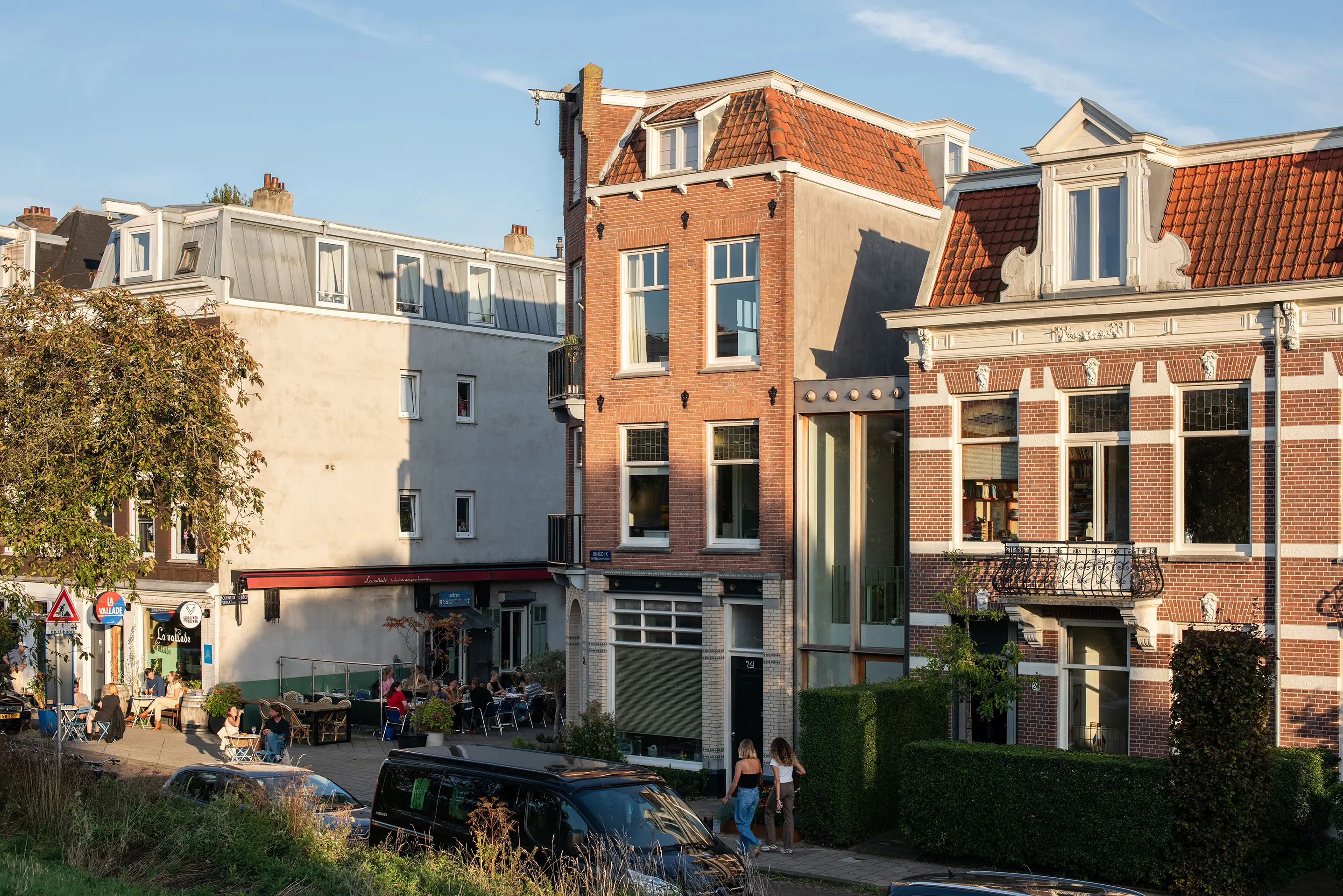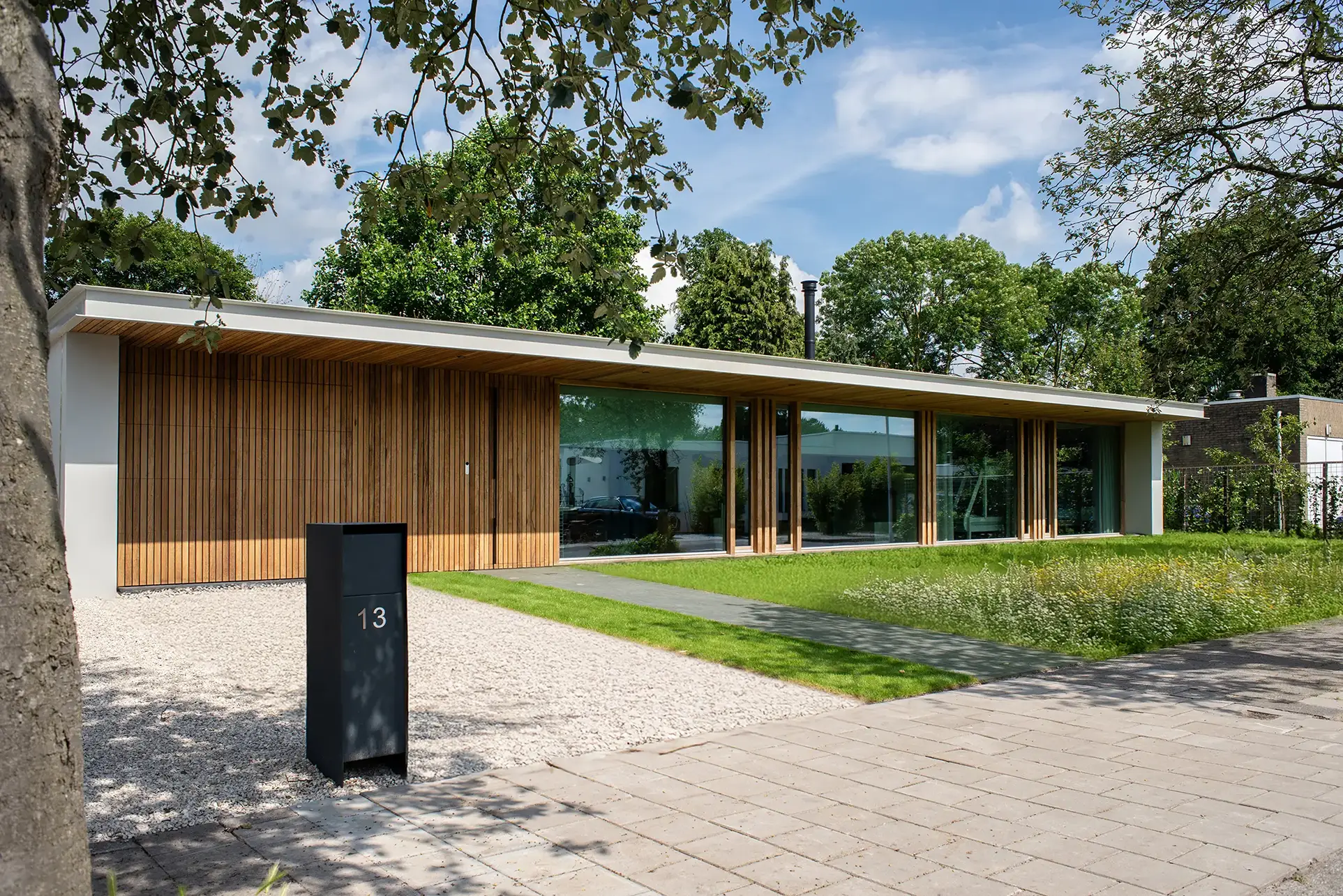This semi-detached 1990s home is located on the Sloterweg, one of the Amsterdam's greenest streets. HOP was asked to design a major extension and renovation so that the family with three young children could continue to live here for many years to come. The house was therefore extended on the side and back with 70m2 of additional living space, bringing the total gross floor area of the house to 237m2. In the double height extension on the side there is a sunken sitting area (a so-called "sitting pit") and a children's room on the first floor, both connected (by means of structural breakthroughs) to the space in the existing section where the dining room and kitchen are located.
The extension to the house folds around the building. On the one hand, it contrasts by deviating in use of materials and form, but on the other hand, it establishes a clear relationship with the main building: The new square windows in the front facade of the main building are continued in the extension, and a horizontal band, in the form of stucco on the main building and horizontal wooden slats in the extension, continues along the entire house at a height of about 3 meters. To further break up the volume, there is an overhang at the front with a sloping set-back gable at ground level, creating a flowing movement around the house as residents walk from the front yard to the back yard.








In this project, a conscious decision was made to use as many sustainable materials as possible. All window frames are made of the highly durable Accoya wood with a transparent coating and the 110m2 surface of the facade is finished with thermally modified hardwood slats, without coating, so that these will age over time and the extension will therefore increasingly blend into its surroundings. The construction of the new section is built entirely from wood (floor, walls and roof) and the interior also features many finishes in wood, such as for the kitchen, built-in cabinets and stairs. The result is a smooth transition between inside and outside, downstairs and upstairs and between existing and new, in materialisation, form and aesthetics.
Photos by Michael Cerrone
%20copy.webp)






























